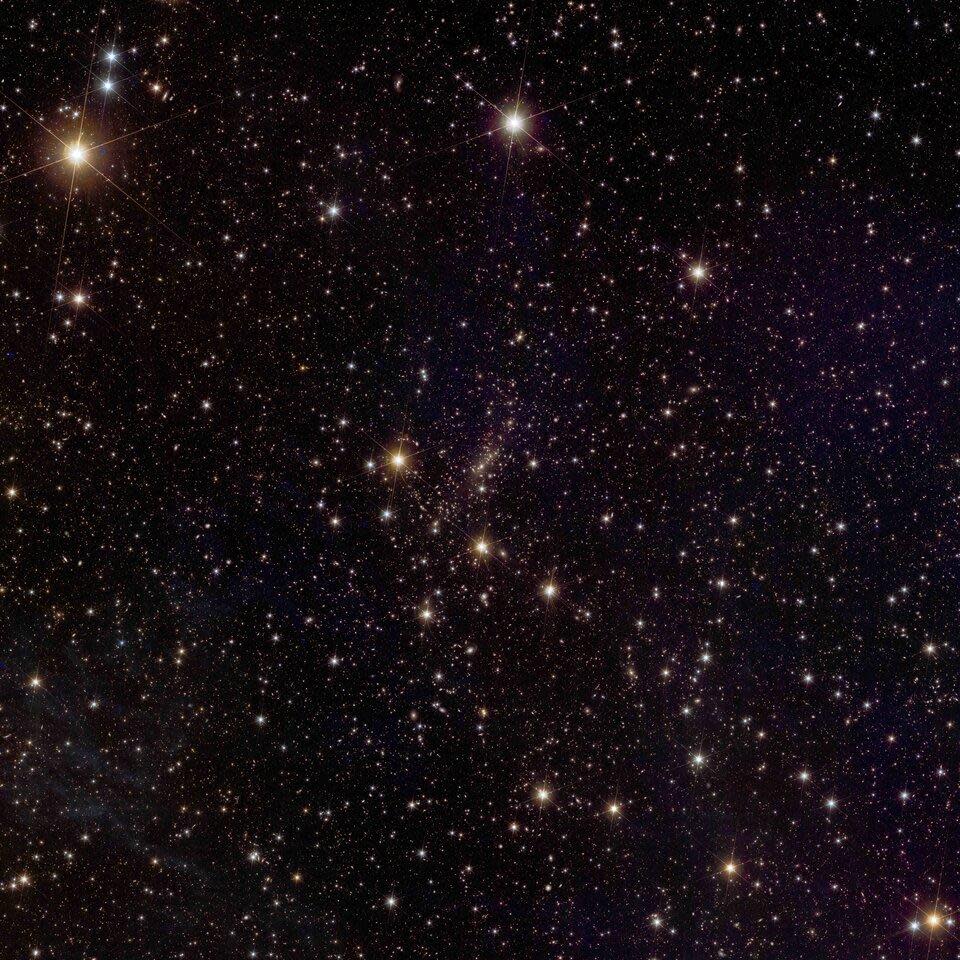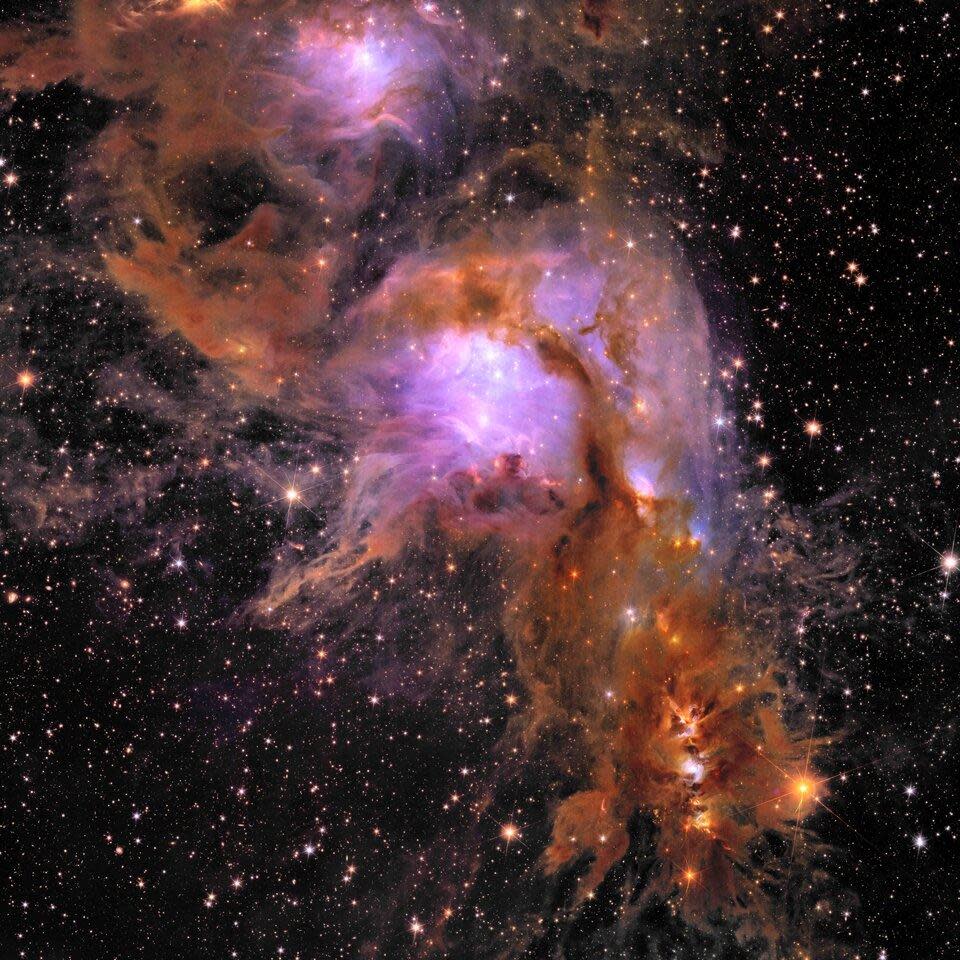A dazzling array of shiny galaxies, a nursery of purple and orange stars and a spiral galaxy like our Milky Way: new images from Europe’s Euclid space telescope were revealed on Thursday.
It is the second set of images released by the European Space Agency since Euclid launched last year on the first ever mission to investigate the mysteries of dark matter and dark energy.
“The never-before-seen images reveal Euclid’s ability to unravel the mysteries of the cosmos and enable scientists to hunt down rogue planets, use lensing galaxies to study mysterious matter, and explore the evolution of universe,” said the European Space Agency i. statement.
Scientific data from Euclid was also published for the first time in the six-year mission, which aims to use its wide field of view to track two billion galaxies across a third of the sky.
Euclid project scientist Rene Laureijs told AFP that he was “personally very excited” by the image of a huge galaxy cluster called Abell 2390. The image of the cluster, which is 2.7 billion light-years away from Earth, includes more than 50,000 galaxies.

A single galaxy – such as our own – can be home to hundreds of billions or even trillions of stars, each of which may be larger than the Sun.
In Abell 2390, Euclid was able to detect the faint light of “orphan stars” passing between galaxy clusters, said Jean-Charles Cuillandre, a French scientist who worked on Euclid.
These stars are expelled from the galaxies, “creating a kind of cloud around the whole cluster,” Cuillandre told AFP.
According to astronomers, this strange phenomenon indicates that there is dark matter between the galaxies.
Dark matter and dark energy are thought to make up 95 percent of the universe — but we know almost nothing about them.
Euclid also took the deepest image ever of Messier 78, a nursery of stars 1,300 light-years from Earth in the constellation Orion.


Stars are still forming in the bluish center of the image. After gestating for millions of years, they emerge from the purple and orange clouds at the bottom of the image. “Bright things are trying to come out,” said Cuillandre.
Laureijs emphasized that “only Euclid can show this in one shot.”
That is because Euclid has a very wide field of view, in contrast to the other space telescope, the James Webb, its neighbor at a stable place hovering 9.3 million miles from Earth.
Another image, of the massive galaxy cluster Abell 2764, shows a black expanse where a single yellow star stands out.
Cuillandre admitted that this was caused by an error in aiming the telescope. But he said the image showed “Euclid’s unique ability to focus light,” because he was still able to pick out very faint objects near the bright star.
Euclid’s image of the young Dorado cluster was astonishing. Although the cluster has already been well studied, Euclid discovered a dwarf galaxy that had never been seen before, the scientists said.
“I’ve never seen anything like it,” Cuilllandre said.
In the fifth new image, the spiral galaxy NGC 6744 — which bears a striking resemblance to the Milky Way — fans out against a backdrop of shining stars.


It is still early days for the mission, and the five new images were captured in one day.
In the coming years, the scientists plan to sift through Euclid’s data in the hope of finding all kinds of celestial bodies like “rogue” planets, which float freely through the universe without being attached to a star.
But researchers are already analyzing the first batch of Euclid images, released in November.
In one of 10 preprint studies published Thursday, scientists looked at the faint light from orphan stars in the Perseus galaxy cluster.
These lost stars are “now trapped in the gravity of dark matter,” Laureijs said.
This is still only an “indirect detection of dark matter,” he emphasized, adding that it was too early to “say something about dark energy.”
An image released last year showed a stunning wide-angle view of Perseus, revealing at least 1,000 gravitationally bound galaxies and 100,000 or so scattered across the more distant background—many of which had never been seen before.
The mission was not entirely smooth sailing.
In March, a delicate operation succeeded in melting a thin layer that was slowing down the telescope’s view by heating one of the telescope’s mirrors.
There are signs that the ice is building up again, Laureijs said, adding that the team has time to investigate what to do next.
It was launched from Cape Canaveral on July 1, 2023 atop a SpaceX Falcon 9 rocket, the $1.5 billion Euclid sits about a million miles from Earth on the far side of the moon’s orbit.
Over the course of its six-year mission, the observatory will image the entire sky around the Milky Way, monitoring galaxies and galaxy clusters dating back 10 billion years.
“The images and associated science results are extremely diverse in terms of subjects and distances observed. They include a variety of scientific applications, and yet they represent only 24 hours of observations. They only hint at what Euclid can do,” Valeria Pettorino, ESA’s Euclid Project Scientist, said in a statement Thursday. “We’re looking forward to another six years of data to come!”
William Harwood contributed to this report.
The Dish: Spaghetti stir fry is a family favourite
How China and Russia fight a propaganda war with the US
Israel protests after disrupting a new video released of hostages in Gaza